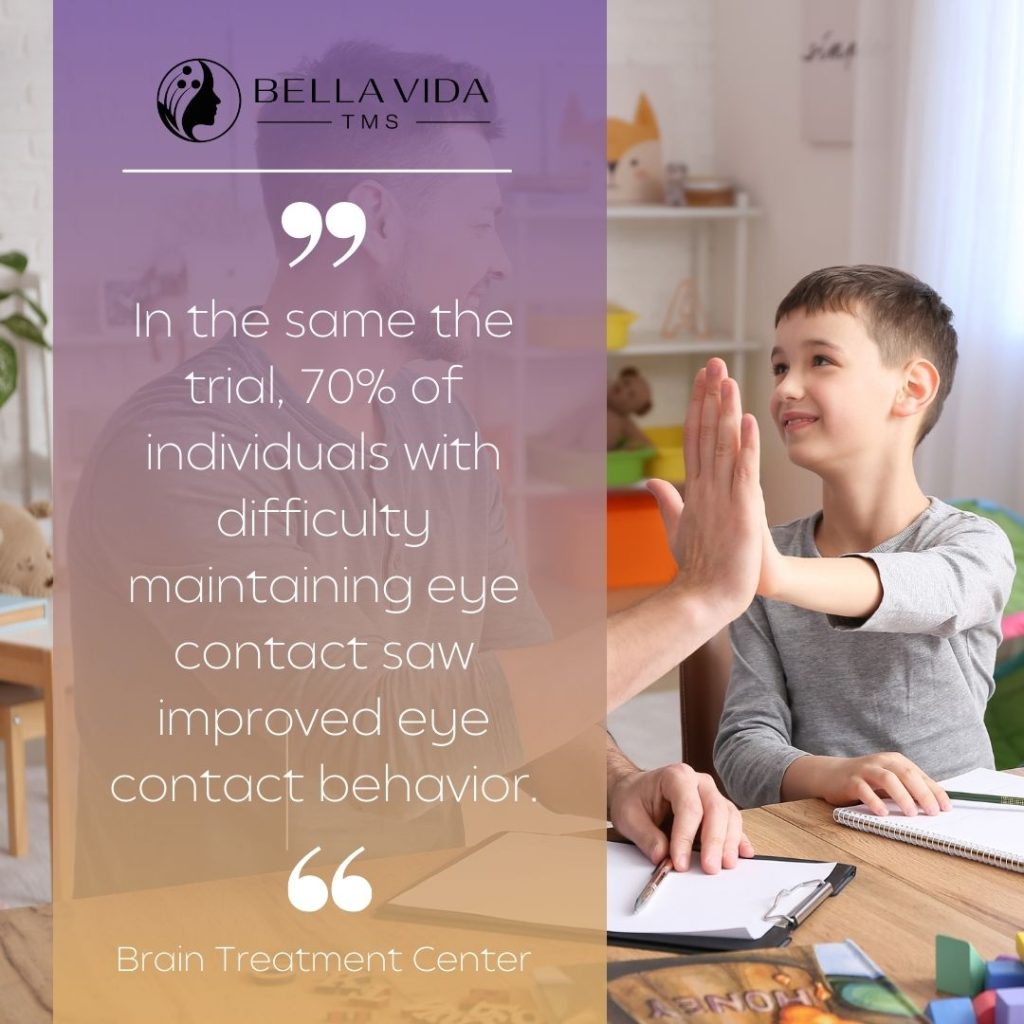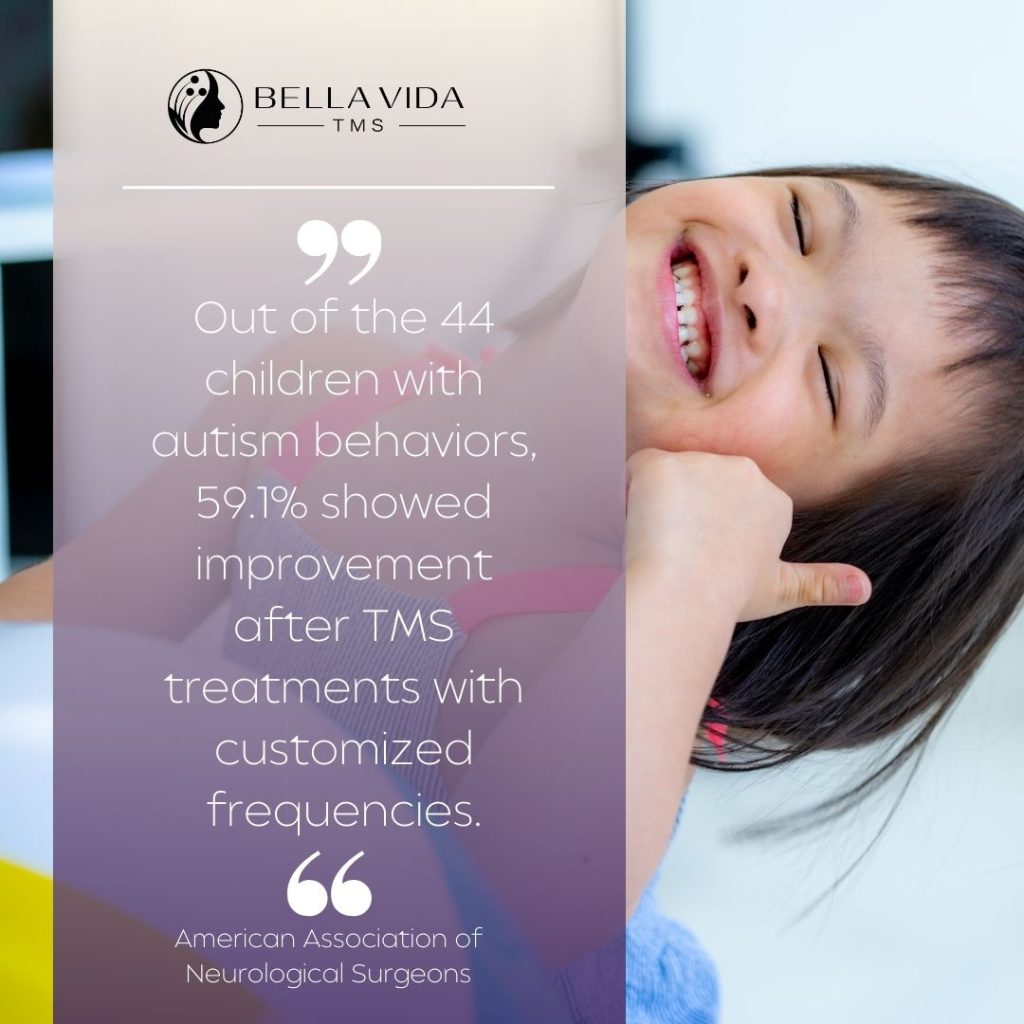In the realm of mental health, neurocognitive tests are the gold standard for evaluating patient responses to treatment. However, PrTMS® takes a step further by incorporating electroencephalogram (EEG) brainwave activity data for an objective assessment of brain function. Alongside neurocognitive data, irregularities in cortical activity detected through EEGs inform treatment decisions. This personalized approach is the key to unlocking the full potential of TMS therapy.
Understanding Autism and the Role of PrTMS®
Autism spectrum disorder (ASD) is a complex neurodevelopmental condition that profoundly affects an individual’s social interaction, communication, and behavior. While there is no cure for autism, there are therapies available aimed at enhancing the lives of those on the spectrum. One such therapy gaining traction is PrTMS®, which operates by harnessing the power of magnetic fields to stimulate specific neural pathways in the brain.
PrTMS® targets areas of the brain crucial for social communication and behavior regulation, areas often impaired in individuals with ASD. By stimulating these regions, PrTMS® holds the potential to alleviate core symptoms of autism. It is important to emphasize that PrTMS® is not a one-size-fits-all solution. Each person with autism is unique, necessitating tailored treatment plans to address their individual needs and objectives.
In the following sections, we will delve deeper into the science behind PrTMS® and explore the potential benefits it may offer to individuals on the autism spectrum. Join us on this journey to discover the promising therapy that could bring new hope to those living with autism.
The Promising Benefits of PrTMS® for Autism
PrTMS®, or Personalized repetitive Transcranial Magnetic Stimulation, carries several potential benefits for individuals on the autism spectrum. By pinpointing specific neural pathways in the brain associated with social communication and behavior regulation, PrTMS® has shown promise in the following areas:

1. Enhanced Communication Skills: Research has revealed that PrTMS® can contribute to improved language development, both expressive and receptive communication, as well as verbal and nonverbal communication abilities. This improvement is significant, as communication difficulties can profoundly impact an individual’s ability to form relationships and lead a fulfilling life.
2. Improved Social Interaction: PrTMS® has demonstrated encouraging results in enhancing social skills, facilitating individuals with autism to engage more effectively in social interactions. This can lead to improved relationships, greater participation in social activities, and an increased sense of acceptance and belonging.
3. Behavior Regulation: Many individuals with autism encounter challenges in managing their behavior and emotions. PrTMS® has the potential to assist in regulating these areas, resulting in reduced impulsive behaviors, improved self-control, and better comprehension of social cues.
However, it is vital to understand that PrTMS® is most effective when integrated into a comprehensive treatment plan tailored to each individual’s specific requirements. While the benefits are promising, it is not a standalone solution.
In the upcoming sections, we will delve deeper into the scientific principles underpinning PrTMS® therapy, exploring how it leverages the brain’s innate ability to adapt and change to bring about positive effects for those with autism. Stay with us as we unravel the innovative therapy that holds the potential to transform the lives of individuals with autism.
The Science Behind PrTMS® Treatment
PrTMS® therapy finds its roots in the fascinating realms of neuroscience and neuroplasticity. Neuroplasticity refers to the brain’s remarkable capacity to reorganize and rewire itself, forming new neural connections and pathways. This extraordinary characteristic serves as the foundation for PrTMS® therapy.
During a PrTMS® session, specialized equipment delivers electromagnetic pulses to precise areas of the brain. These pulses are meticulously calibrated to target neural pathways associated with social communication and behavior regulation, areas often compromised in individuals with autism.
These electromagnetic pulses spark neural activity in these areas, promoting the creation of new connections while strengthening existing ones. Through repetitive activation of these circuits, PrTMS® therapy facilitates the brain’s rewiring process, leading to more efficient and effective pathways.
The outcome is potential improvements in communication skills, social interaction abilities, and behavior regulation for individuals with autism. PrTMS® therapy is highly personalized, involving a comprehensive evaluation, including brain mapping, to identify the exact areas of the brain requiring stimulation. This personalized approach ensures that the therapy is both targeted and effective.

Why Personalization Matters

Just as medical treatments should be tailored to an individual’s unique needs, PrTMS® therapy recognizes the importance of personalization. Unlike conventional TMS (Transcranial Magnetic Stimulation), which takes a one-size-fits-all approach, Personalized repetitive Transcranial Magnetic Stimulation (PrTMS®) offers a smarter and more sophisticated method. PrTMS® utilizes a proprietary, patent-pending protocol to create personalized treatment plans that align TMS therapy with each patient’s specific requirements, potentially leading to optimal results.
Furthermore, PrTMS® incorporates electroencephalogram (EEG) brainwave activity data alongside neurocognitive test data to provide an objective assessment of how a patient’s brain is functioning. This holistic approach ensures a comprehensive understanding of the patient’s condition, which informs their treatment plan.
The rise in interest in TMS clinics and therapists stems from the promising advancements in therapies like PrTMS®. These therapies are offering newfound hope and potential for individuals with autism, utilizing cutting-edge science and personalized approaches to enhance their lives and well-being.
External Reference links
- Peak Logic – Understanding PrTMS and TMS
- Brain Treatment Center – MeRT for Autism
- Society for Brain Mapping & Therapeutics – Noninvasive EEG-EKG Guided Trans-magnetic Stimulation at Natural Resonance Frequency in Children with Autism
- American Association of Neurological Surgeons – Improved Autism Behaviors After Noninvasive Cerebral Trans-magnetic Stimulation Using Customized Frequency Modulation: Follow-up Mean 24 Months




